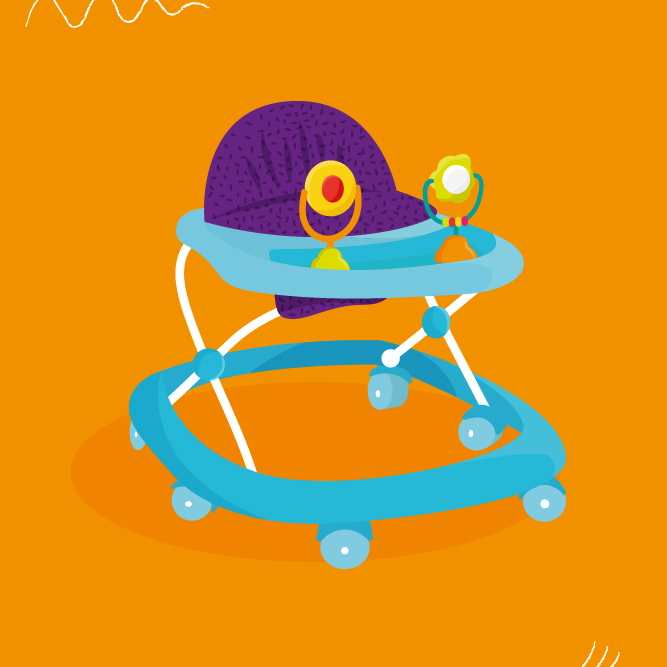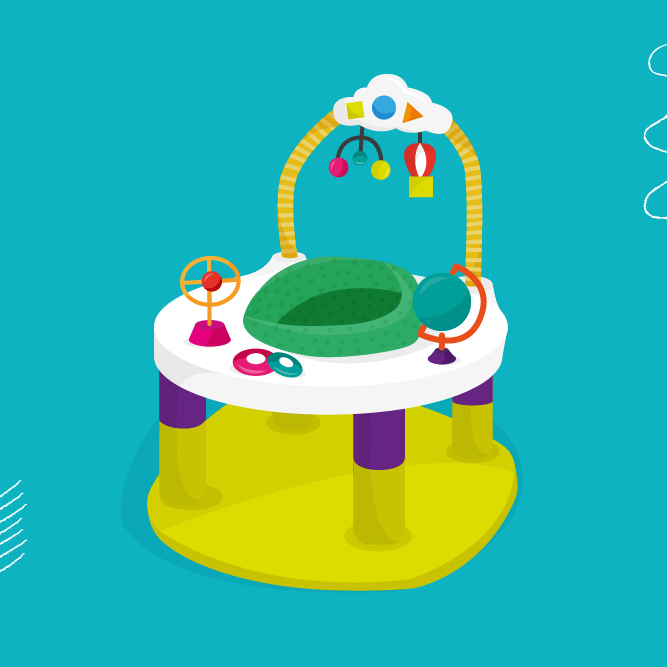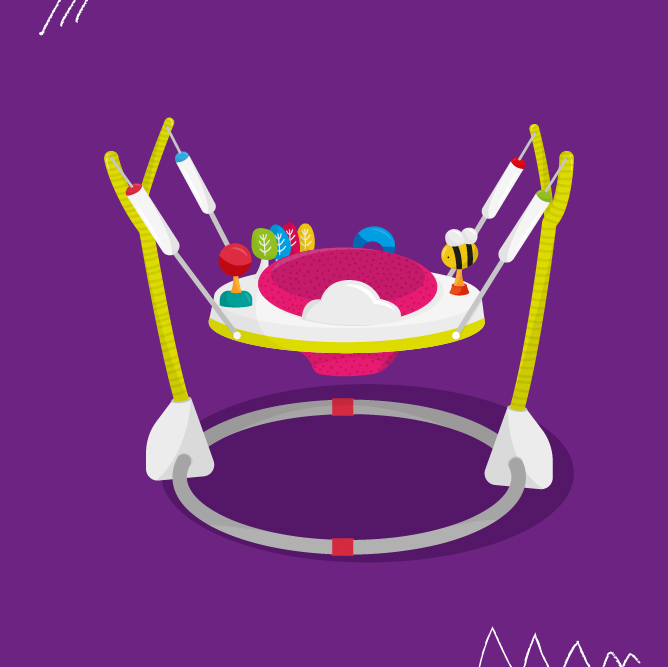What are walkers?
Not to be confused with the posterior walkers that are considered pieces of complex rehabilitation technology, or “CRT”, these walkers are designed for use in younger children not yet walking.

What are Exersaucers?
Exersaucers are similar to walkers, but without wheels, which can make them a safer alternative.

What are Jumpers?
Baby jumpers are sling-type seats that are attached to a doorway or a portable frame that provide a spring-like movement allowing your child to experience “jumping.”

What’s the big deal?
These systems involve a cloth seat, which places your child’s hips in a position that may increase the risk of hip dysplasia/dislocation later in life. Additionally, your child may develop heel cord tightness resulting in “toe-walking” once they are standing outside the jumper/walker.
Each one of these devices allows your child to perform certain movements before they are ready. This leads to an increase in atypical movement patterns and poorly controlled movements. Should your child already demonstrate these difficulties with movement, they may become more pronounced.
Research shows using these kinds of toys does not help your child achieve independent skills sooner, because they are able to “walk”, “sit”, “jump” in a seated, supported, and poorly aligned position. This means they are not able to fully practice the muscle control and balance reactions necessary for moving outside of the device.
Should I never place my child in their walker/jumper/exersaucer?
Just like all things in life, moderation is key! Spending some time in these seats is great for taking breaks from the day. However, it is generally recommended a child spend no more than 15-30 minutes per day inside these devices. This allows your child to play and move in a variety of different settings and positions.
Are there alternatives?
Placing your child in one of these devices once their feet can fully reach the ground, and can sit independently without the use of their arms, can help to limit some of the negative positioning effects.
Should you find some of the toys on the trays of the walker/exersaucer are particularly interesting to your child, remove the toys and make them available to play with while your child is not in the device.
As always, floor play or “tummy time” is the most recommended position to allow your child to begin to move freely. A Pack ‘n Play set up using universal safety guidelines allows your child to play in a contained area while still allowing freedom to move.

